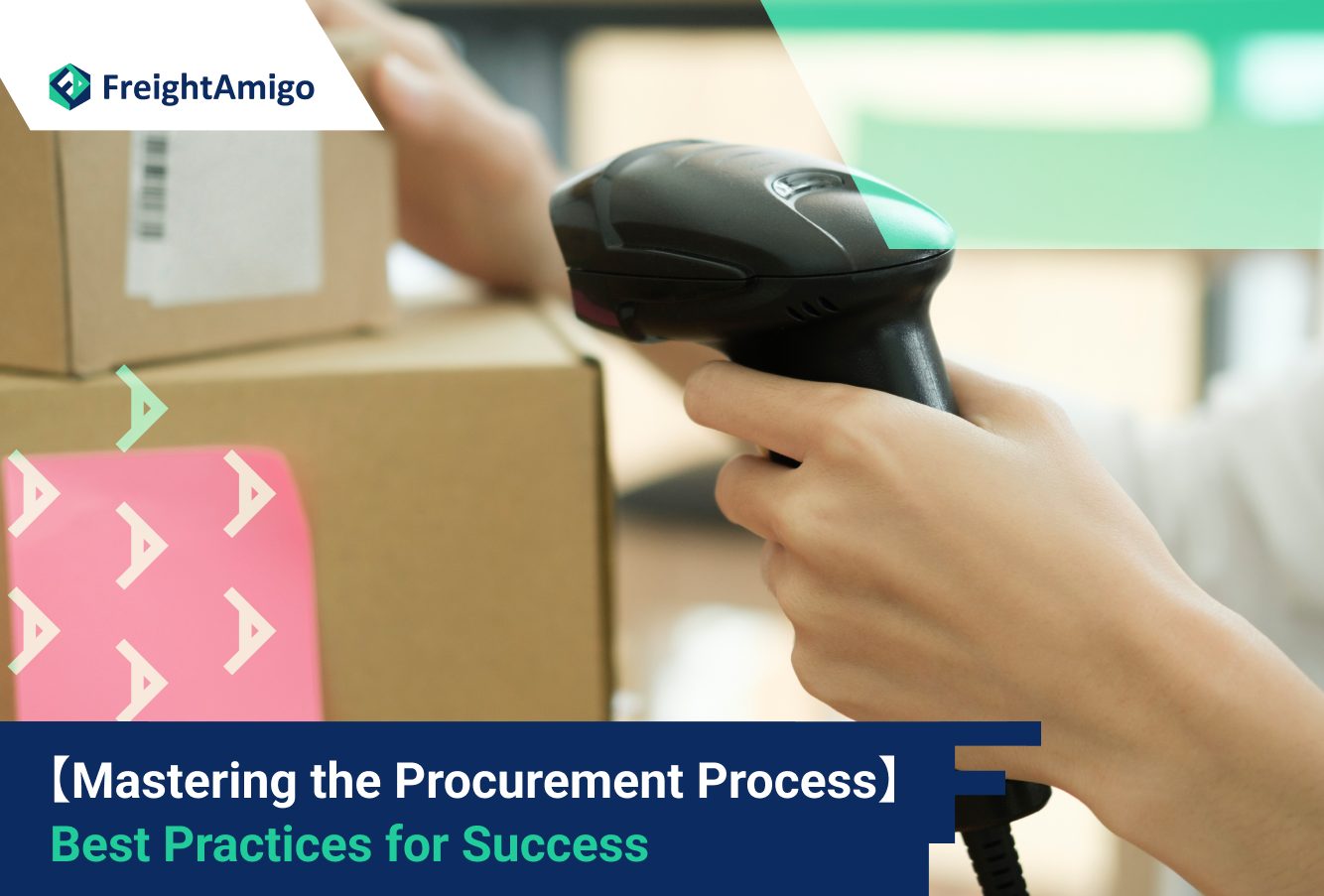Author Name: Tiffany Lee – Marketing Analyst at FreightAmigo
Introduction to the procurement process
The procurement process is a vital aspect of any organization’s operations. It involves acquiring goods and services from external suppliers to meet the needs of the business. Whether it’s purchasing office supplies, raw materials, or outsourcing professional services, understanding and mastering the procurement process is crucial for success.
The procurement process encompasses a series of steps that organizations follow to ensure efficient and cost-effective procurement. By adhering to best practices, businesses can streamline their operations, reduce costs, and improve overall performance.
Want To Compare The Best Express, Air Freight, Sea Freight, Rail Freight & Trucking Rates So As To Have Better Control On Cost?
Understanding the procurement process steps
To gain a comprehensive understanding of the procurement process, it is essential to familiarize oneself with its various steps. The procurement process typically consists of the following stages:
- Identifying the Need: The first step involves identifying the goods or services required by the organization. This could be anything from office equipment to specialized software.
- Supplier Selection: Once the need is identified, the organization must engage in supplier selection. This involves evaluating potential suppliers based on factors such as quality, price, reputation, and delivery capabilities.
- Negotiation: After selecting a supplier, the organization enters into negotiations to establish mutually beneficial terms and conditions. This includes price negotiations, contract terms, and service level agreements.
- Purchase Order: Once the negotiations are complete, a purchase order is issued to the selected supplier. This formal document outlines the details of the purchase, including quantity, price, delivery date, and any specific requirements.
- Receipt and Inspection: Upon receiving the goods or services, the organization inspects them to ensure they meet the agreed-upon specifications. Any discrepancies or issues are addressed with the supplier.
- Invoice and Payment: Finally, the supplier issues an invoice, and the organization processes payment according to the agreed-upon terms. This completes the procurement process.
Key stakeholders in the procurement process
The procurement process involves several key stakeholders who play vital roles in its successful execution. Understanding these stakeholders and their responsibilities is crucial for effective collaboration and coordination throughout the procurement process.
- Procurement Team: This team is responsible for managing the end-to-end procurement process, including identifying needs, selecting suppliers, negotiating contracts, and ensuring timely delivery.
- Requestors: Requestors are individuals or departments within the organization who initiate the procurement process by identifying the need for goods or services. They provide detailed specifications and requirements to the procurement team.
- Budget Holders: Budget holders are responsible for allocating funds and approving purchases within their allocated budgets. They work closely with the procurement team to ensure that procurement aligns with the organization’s financial goals.
- Supplier Management: Suppliers are crucial stakeholders in the procurement process. Building strong relationships with suppliers is essential for ensuring reliable and high-quality goods and services.
- Finance Department: The finance department plays a critical role in the procurement process by managing invoices, processing payments, and ensuring compliance with financial regulations.
Having clear roles and responsibilities for each stakeholder ensures smooth communication and collaboration throughout the procurement process.
Software procurement process: Best practices and considerations
Software procurement is a specialized area that requires careful consideration and adherence to best practices to ensure successful implementation and utilization of software solutions. Here are some key considerations for the software procurement process:
- Needs Assessment: Before embarking on software procurement, it is essential to conduct a thorough needs assessment. This involves identifying the specific requirements, functionality, and integration needs of the organization.
- Vendor Evaluation: When selecting a software vendor, it is crucial to evaluate their track record, reputation, customer support, and scalability. Engaging with references and conducting demonstrations can help in making an informed decision.
- Contract Negotiation: Software procurement often involves complex licensing models and terms. Negotiating favorable terms, such as pricing, maintenance, upgrades, and support, is essential to maximize value and minimize risks.
- Implementation and Training: Successful software procurement goes beyond the purchase. Adequate planning for implementation, user training, and change management is crucial to ensure smooth adoption and utilization of the software.
- Post-Implementation Support: Ongoing support from the software vendor is crucial for resolving issues, receiving updates, and maximizing the software’s potential. Ensure that the vendor provides reliable support and has a clear roadmap for future enhancements.
By following these best practices, organizations can optimize their software procurement process and ensure successful implementation and utilization of software solutions.
Strategies for optimizing the procurement process
Optimizing the procurement process is crucial for organizations looking to achieve cost savings, operational efficiency, and improved supplier relationships. Here are some strategies to consider:
- Centralized Procurement: Centralizing procurement functions can lead to better coordination, standardization, and economies of scale. It allows organizations to leverage their purchasing power, negotiate better deals, and reduce duplication of effort.
- Supplier Relationship Management: Building strong relationships with suppliers is essential for long-term success. Regular communication, performance evaluations, and joint improvement initiatives can foster collaboration and drive continuous improvement.
- Streamlined Approval Workflow: Implementing a streamlined approval workflow ensures that purchase requests are reviewed and authorized in a timely manner. This reduces delays, improves responsiveness, and prevents maverick spending.
- Technology Adoption: Embracing technology solutions, such as e-procurement platforms, contract management systems, and data analytics tools, can enhance visibility, automate processes, and enable data-driven decision-making.
- Continuous Improvement: Regularly reviewing and improving procurement processes is key to staying ahead of changing market dynamics. Encouraging feedback, benchmarking performance, and implementing best practices ensure continuous optimization.
Conclusion
Mastering the procurement process is essential for organizations seeking to optimize their operations and achieve strategic goals. By understanding the various steps involved, the key stakeholders, and best practices in different contexts such as government procurement and software procurement, businesses can streamline their processes, reduce costs, and improve overall efficiency. Additionally, leveraging technologies like robotic process automation and implementing strategies for optimization further enhances the effectiveness of the procurement process. By adopting these best practices and continuously striving for improvement, organizations can master the procurement process and drive success.
There Are Different Options For Cargo Transportation. If You Want To Choose The Most Convenient And Suitable Solution, It Is Best To Have The Full Support Of Logistics Experts! If You Are Planning To Ship Goods Overseas, Please Go To The FreightAmigo Page For Inquiries.
===
Read More:
【Cosmetic Product Recycling】 A Guide to Sustainable Reverse Logistics
【Rise of Green Supply Chain】 Pioneering Sustainable Practices in Logistics
【ESG in Logistics】 How ESG Practices Drive Social Responsibility in Logistics
===
If you have any inquiries on logistics/supply chain, feel free to contact FreightAmigo now:
Chat with us online OR
Phone : +852 28121686
WhatsApp: +852 27467829



